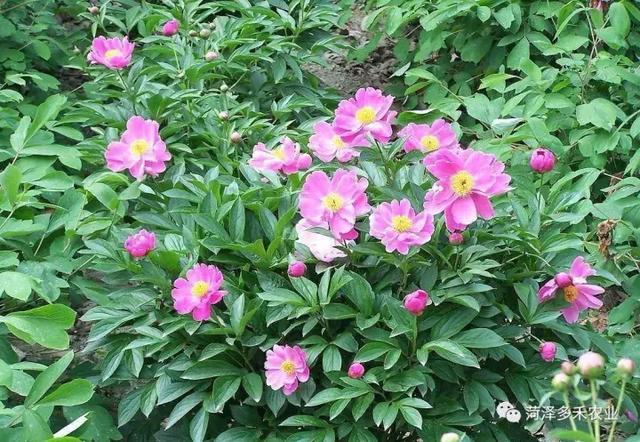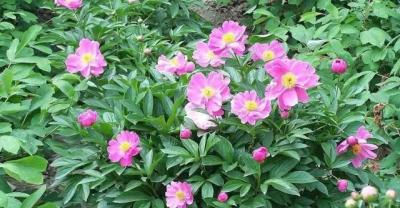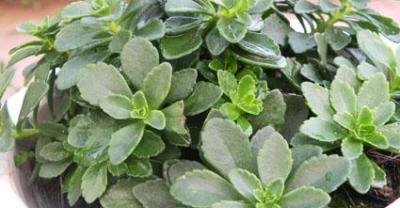Planting techniques and cultivation Management of Radix Paeoniae Rubra
[summary] Radix Paeoniae Rubra is a commonly used traditional Chinese medicine with a long history of application. It is a good product for clearing heat and cooling blood and dispelling blood stasis. Definition: root is the root of Paeonia lactiflora (wild product) of Ranunculaceae. Most of them are wild. The former mainly produces Inner Mongolia, three northeastern provinces and Hebei, Shanxi and other places. Sichuan Radix Paeoniae Rubra mainly produces Sichuan, Gansu, Yunnan, Guizhou and other places.
[growing environment] most of the wild peony grows in the mountains and grasslands at an altitude of 500m to 1500m in the north. The soil is brown or dark brown forest soil, commonly found on hillsides, ditches, under broad-leaved mixed forests, forest margins and shrubs. Sichuan Radix Paeoniae Rubra grows mainly in the mountains and valleys on the edge of the Qinghai-Tibet Plateau, and the soil is mostly plateau brown soil and dark brown soil. It has the characteristics of light, drought resistance and cold resistance.
[planting technology] 1. Land selection and preparation: loam and sandy loam are the most suitable for Radix Paeoniae Rubra, followed by sandy soil, and the clayey soil side is poor. After autumn crops are harvested, autumn turns are carried out in order to drive away diseases and insect pests. In the following spring, the soil was prepared and leveled with a rake after ploughing, and then the border was made. The size of the border can be determined specifically according to the situation of the base area. 2. Breeding and cultivation: the seed roots can be sorted after autumn harvest, and the seed roots must be persistent roots with buds, complete and flawless, and robust. When planting, the holes were burrowed before the border, the distance between rows and plants was 40~50cm, and then the seed roots were planted in the holes, the buds were up, and 1 plant was planted in each hole, with an average of about 3000 plants per 667m. After separate planting of Radix Paeoniae Rubra, it can be intercropped with millet and soybeans on the border from the first to the second year, but no other crops can be planted in the third year. Red peony bogey continuous cropping, planted red peony on the land, it is best to change the soil or replant other crops, in order to avoid diseases and insect pests.

[cultivation management] 1. Fertilization and weeding: fertilizer is generally used with barnyard manure and bean cake and applied immediately at the same time of planting. The first fertilization can be applied by digging holes with hoes between plants after emergence in early spring, and then covering with soil, fertilizing once or twice a year in spring and autumn, and hoeing weeds again to prevent the spread of weeds. 2. Picking buds: after planting, peony buds blossom every year. In order to ensure sufficient nutrients in the roots of Radix Paeoniae Rubra, they are removed when they form buds. 3. Pest control: (1) Diseases: ① peony gray mold: diseases caused by pathogens, leaves, stems, flowers and other parts will be killed. The disease usually occurs after flowering, and it is the most serious when it is overcast and rainy. Prevention and treatment methods: remove the injured branches and leaves after the disease, burn them or bury them deeply. To adopt crop rotation or select disease-free seed buds, we should strengthen field management, timely drainage and maintain ventilation and light transmission. The plants were sprayed with 1-1-1-1-1-1-1-1-1-1-1-1-1-1-1-1-1-1-1-1-1-D-1-1-1-D-1-1-D-1-D-1-1-D-1-D-1-D-100 Bordeaux solution every 10-14 days for 3 times in a row. ② peony rust is harmful to leaves, and the disease is more serious from July to August. Prevention and control methods: the residual branches and diseased leaves were burned during harvest to reduce the source of overwintering bacteria. At the initial stage of the disease, spray Baume 0.3-0.4 degree stone sulfur mixture or 70% dimethylidene sodium 400 times solution, the effect is good. (2) insect pests: there are grubs, ground tigers, mole crickets and so on. Zinc parathion 2kg/667 powder can be used to make poisonous soil, which can be poisoned by soil preparation.
[harvest and processing] the harvest is usually 3 years, but can also be extended to 4 years and 5 years. But after 5 years, the roots turn black, which leads to poor quality. Autumn is the best harvest time. Will dig the root, remove the fibrous root, wash the sediment, dry or Kang dry.
[medicinal material shape] 1. Radix Paeoniae Rubra: this product is cylindrical, slightly curved, long 5~40cm, diameter 0.5~3cm. The surface is brown, rough, with longitudinal grooves and wrinkles, and has whisker root marks and lateral protruding lenticels, some of which are easy to fall off. The quality is hard and brittle, easy to break, the broken flour is white or pink, the skin is narrow, the wood has obvious radial texture, and some cracks appear. The breath is slightly fragrant and the taste is slightly bitter and sour. 2. Sichuan Radix Paeoniae Rubra: scraping Radix Paeoniae Rubra, mostly single, thick, round, thick or slightly curved, long 10~26cm, thick 1~4cm in the middle. There is no Reed head at the top, it is thick and fat, and the lower end is gradually small, but there are also round strips. The surface is light purplish red or fleshy white, with longitudinal wrinkles, solid body, powdery cross-section, white, peripheral light yellow, with yellowish chrysanthemum texture, especially the old root, the young root is purple in the heart, bitter taste, slightly sweet, strong aroma. The shape of original skin Radix Paeoniae Rubra is similar to that of scraping Radix Paeoniae Rubra. Most of them are single or bifurcated. The rough skin is brownish red or dark brown with longitudinal texture. The color in the section is dim, or yellowish-white, with chrysanthemum texture and powdery. The smell is similar to shaved Radix Paeoniae Rubra.

Professional planting base of Duohe peony and peony
Pure variety, high survival rate, small investment and good income.
- Prev

Key points of planting techniques of baby vegetables
Baby vegetable is a kind of pocket-sized cabbage. Its plant shape is small and exquisite, help thin crisp tender, outside green inside white, taste fragrant, nutritious, deeply consumer's green.
- Next

Diagram of planting method of Zhu Dinghong
Zhu Dinghong's flowers are huge and colorful, and its roots are familiar with garlic, so it is also a perennial flower of the family Amaryllidaceae. Because his flowers are big.
Related
- Fuxing push coffee new agricultural production and marketing class: lack of small-scale processing plants
- Jujube rice field leisure farm deep ploughing Yilan for five years to create a space for organic food and play
- Nongyu Farm-A trial of organic papaya for brave women with advanced technology
- Four points for attention in the prevention and control of diseases and insect pests of edible fungi
- How to add nutrient solution to Edible Fungi
- Is there any good way to control edible fungus mites?
- Open Inoculation Technology of Edible Fungi
- Is there any clever way to use fertilizer for edible fungus in winter?
- What agents are used to kill the pathogens of edible fungi in the mushroom shed?
- Rapid drying of Edible Fungi

